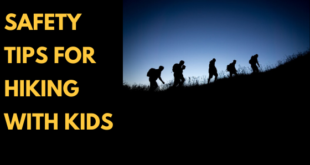The Covid-19 has exploited fully in the first world. But there are other worlds, through which millions of tourists travel every year, who have been carrying infectious diseases all their lives, some equal or more deadly than the coronavirus. Emergencies that we have always forgotten.
The Covid-19 pandemic has two peculiarities that make it special. The first, its tremendous contagion power regardless of continents, latitudes, or socioeconomic status. The second, consequence of this first, which has hit the target square, comfortable, scary, and unprepared first world. Which, as a consequence, has panicked. However, in less developed countries they have lived all their lives with infectious diseases equal to or more deadly than the coronavirus, and no one has asked to stop the planet for it. What’s more, millions of tourists from that first world have traveled through those territories regardless of their effects. Maybe if we had taken the same conscience as when it concerns us, There would already be a vaccine for leishmaniasis or malaria, and half a million people would not die every year from malaria. These are the ten main infectious diseases that travelers live with:
Malaria or malaria
Who transmits it?
The bite of the female Anopheles mosquito, which inoculates a parasite, the final cause of the disease.
Symptoms
The first symptoms (fever, headache, and chills) may be mild, making recognition difficult. They appear 10 or 15 days after being infected. There are different types of malaria; the most serious, plasmodium falciparum malaria can be fatal if left untreated within the first 24 hours.
How many deaths does it cause?
In 2018, it is estimated that there were 228 million cases of malaria worldwide, which led to 405,000 deaths (there are sources that raise that figure to 1.2 million). In 2017, 231 million were infected and 416,000 died.
Where does it affect more?
According to the WHO, the majority of 2018 malaria cases (93%) occurred in Africa. 3.4% in Southeast Asia and 2.1% in the Eastern Mediterranean. More than half of malaria cases worldwide were concentrated in six countries: Nigeria (25%), the Democratic Republic of the Congo (12%), Uganda (5%) and the Ivory Coast, Mozambique and Niger (4 % respectively).
Leishmaniasis
Who transmits it?
A parasite of the genus leishmania transmitted by the bite of sandflies (dipterous insects that feed on blood) infected. There are three main forms of leishmaniasis: visceral (the most severe form of the disease, often known as kala-azar), cutaneous (the most common), and mucocutaneous.
Symptoms
Symptoms vary depending on the form of the virus:
- Visceral leishmaniasis: irregular episodes of fever, weight loss, inflammation of the liver, and anemia.
- Cutaneous leishmaniasis: produces ulcer-like skin lesions in exposed areas of the body.
- Mucocutaneous leishmaniasis: partially or completely destroys the mucous membranes of the nose, mouth, and throat.
How many deaths does it cause?
It is estimated that between 700,000 and one million new cases and between 26,000 and 65,000 deaths occur each year.
Where does it affect more?
The disease, which affects the poorest populations on the planet, is associated with malnutrition and poor living conditions. Of the visceral, in 2017 and according to the WHO, 95% of new cases occurred in 10 countries: Bangladesh, Brazil, China, Ethiopia, India, Kenya, Nepal, Somalia, Sudan, and South Sudan. Of the mucocutaneous, more than 90% of cases occur in Brazil, Bolivia, Ethiopia, and Peru.
Zika
Who transmits it?
A mosquito of the Aedes genus, although it can also be transmitted sexually.
Symptoms
Fever, skin rashes, conjunctivitis, muscle and joint pain, malaise, and headaches. In general they are mild and do not last more than seven days.
How many deaths does it cause?
Zika does not kill, but it can cause many problems for the fetus in pregnant women: microcephaly and other birth defects and miscarriages.
Where does it affect more?
The WHO has classified countries with Zika into four groups, according to the virulence of the disease. Category 1 groups those with the most active transmission since 2015 and the list is vast: Angola, Cape Verde, Guinea-Bissau, Brazil, Colombia, Costa Rica, Cuba, Curaçao, Dominica, Ecuador, El Salvador, USA, Guatemala, Argentina, Bahamas, Mexico, Bolivia, Jamaica, Venezuela, and thirty other countries.
Traveling Caution By Limo Lux
“I am concerned about flying and being at the airport (DIA) now that the coronavirus is around because you don’t know how people take care of themselves,” said Mr. Grigoryan, Owner of Limo Lux and theatrical design, who travels to Denver City, A city that “doesn’t scare me because it’s not at risk level two or three yet, and as long as it’s still level one, I feel safe.”
 ivibz Interesting Vibes
ivibz Interesting Vibes



